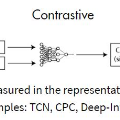Conversation disentanglement aims to group utterances into detached sessions, which is a fundamental task in processing multi-party conversations. Existing methods have two main drawbacks. First, they overemphasize pairwise utterance relations but pay inadequate attention to the utterance-to-context relation modeling. Second, huge amount of human annotated data is required for training, which is expensive to obtain in practice. To address these issues, we propose a general disentangle model based on bi-level contrastive learning. It brings closer utterances in the same session while encourages each utterance to be near its clustered session prototypes in the representation space. Unlike existing approaches, our disentangle model works in both supervised setting with labeled data and unsupervised setting when no such data is available. The proposed method achieves new state-of-the-art performance on both settings across several public datasets.
翻译:分歧的分歧旨在将言论组合成独立的会议,这是处理多党对话的一项根本任务。 现有方法有两个主要缺点。 首先,它们过分强调双语关系,但没有足够注意言论与文字关系模型。 其次,培训需要大量的人类附加说明数据,而在实践中获得这些数据的费用非常昂贵。 为了解决这些问题,我们提议了一个基于双级对比学习的一般分解模式。 在同一届会议上,它带来更接近其分组会议原型的言论,同时鼓励每种言论靠近代表空间的组合会议原型。 与现有方法不同,我们不共通的模型在受监督的环境中工作,同时使用标签数据,在没有此类数据的情况下不受监督的设置。 拟议的方法在多个公共数据集的两种环境中都实现了新的最新状态。


